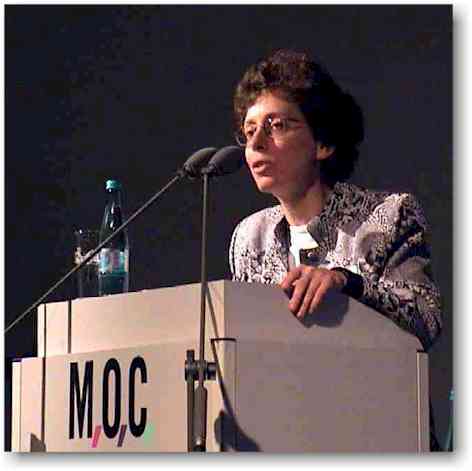| New hardware | ||
Special for studioexpresso.com by Mel Lambert; June 2002 | |||
Most of us make it to the yearly Audio Engineering Society Conventions held on alternating coasts each Fall. But the European conventions shouldn't be overlooked; held in the Spring in either Amsterdam, Hamburg or Paris (other cities are also under consideration), the event is more relaxed than the North American shows, and represents an opportunity to see hardware from companies that are less well know here in the States. As well as securing news of new developments from the well established brands. Console manufacturers AMS-Neve, Euphonix, Harrison, Soundtracs, SSL and Yamaha were proudly showing of a range of recently announced offerings, while StageTec unveiled the all-new Aurus "Direct-Access Console" that offered 24-bit/96 kHz resolution with up to 300 inputs, 256 buses and 96 channel strips plus snapshot/dynamic automation for all system parameters. Studer's Vista 7 Digital Mixing System incorporates the remarkable Vistonics operating interface, which providing instant overview of all control-strip parameters, as well as easy access to critical controls - no delving through menus or layers to find the knob you need.
AMS-Neve spotlighted its new Logic MMC Digital Console, a successor to the classic Logic 2 design, but with 24/96 operation, new I/Os and the firm's XSP DSP engine. A total of 500 signal paths are available at 48 kHz; 250 at 96 kHz. Encore Automation offers direct user compatibility with DFC, 88R, V-Series and Libra systems. Full surround-sound routing/pan is also provided. A lot of bang for the buck, by all appearances. And the 88R Analog Console is making an impression in Europe, with a recent order from Massimo Scarparo, a Rome-based residential facility; AIR Studios and Sphere Studios are also recent customers.
And Fostex is the first licensee of Digigram's EtherSound technology, which allows low-latency networks to be set up within a studio using conventional Cat-5/6 cabling, I/O cards and hubs. Up to 64 channels of 24/48 audio can be accommodated, with bi-directional control data. Finally, news of an interesting new European pro-audio magazine from the folks that brought you "Studio Sound." Zenon Schoepe and Phil Bourne have launched "Resolution," an new title that will be published eight times a year. As they say in the magazine's promotional literature: "Audio has a vital part to play in selling new formats in music recording, broadcast delivery and post, all through multichannel. Without a doubt, there are more professional end-users involved with the creation of audio content now than there have ever been, thanks to the democratization of digital and workstation technology." Watch the skies!
| |||






